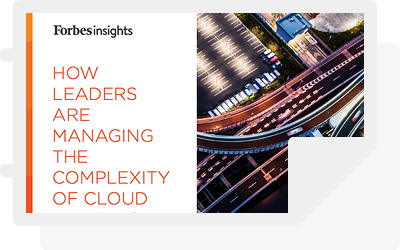As cloud computing has proliferated in both scope and popularity, so have the ways in which businesses use the cloud to meet their needs. Today’s cloud ecosystem includes an acronym soup of services – SaaS, PaaS, IaaS, and the like – as well as a variety of different deployment models designed to suit organizations’ unique requirements around infrastructure, workloads, security, and more.
Many adopters of cloud computing rely on the public cloud, in which businesses or individuals outsource application and/or infrastructure hosting to a third party, like Amazon, Microsoft, or Google. While this model is strong and growing, it doesn’t address every use case. Organizations are also bringing cloud computing in-house with a private cloud model, often to address security and governance concerns. A private cloud uses virtualization plus automated provisioning and orchestration to deliver a cloud service like IaaS or PaaS on assets owned and maintained by the organization itself.
The “right” cloud solution for most businesses, however, is not either public or private, but both. Traditionally, this meant running a hybrid cloud. But a new deployment model leveraging multiple types of cloud services has recently arisen as well: multi-cloud.
The term “multi-cloud” grew from the realization that “cloud” is no longer a singular noun – most companies now run multiple clouds, in multiple ways, to address a whole slew of requirements. While the label makes sense intuitively, its place in the cloud pecking order isn’t as clear. What makes a multi-cloud deployment different from hybrid cloud? What’s the difference? Is this just another IT marketing buzzword?
Hybrid cloud vs. multi-cloud: what’s the difference?
The confusion between hybrid cloud and multi-cloud is compounded by the fact that they’re often used interchangeably. Although it can seem like a semantic argument, there is a real difference between the two, and we believe that the distinction will grow more important as multi-cloud models become the norm.
Let’s break it down.
In a multi-cloud solution, an organization uses multiple different public cloud services, often from multiple different providers. The different clouds may used for various tasks to achieve best-of-breed results or to reduce vendor lock-in. This reflects the growing acknowledgement that not all clouds are created equal; Marketing and Sales, for instance, likely have different needs than Software Development or R&D, and different cloud solutions can meet those requirements more effectively. Multiple clouds also give organizations added peace of mind by minimizing dependence on any one provider, often decreasing costs and increasing flexibility.
Whatever the reason for their multi-cloud strategy, organizations’ multiple public clouds usually operate in combination with on-premise physical, virtual and private cloud infrastructure. In other words, a multi-cloud environment starts with multiple public clouds but encompasses every aspect of your IT ecosystem, including private clouds and other on-premises deployments.
Hybrid cloud, on the other hand, combines private and public clouds toward the same purpose.
This differs from multi-cloud in two main ways.
- Hybrid always includes private and public, while multi-cloud always includes multiple public clouds but can also incorporate physical and virtual infrastructure (including private clouds.)
- Unlike a multi-cloud model, in which different clouds are used for different tasks, the components of a hybrid cloud typically work together. As a result, data and processes tend to intermingle and intersect in a hybrid environment, while in a multi-cloud situation, usage typically remains in its “own” cloud’s silo.
What does this look like in practice? An application running in a hybrid cloud framework could use load balancing, web and application services from a public cloud while the database and storage live in a private cloud. It has compute resources that perform the same function in both a private cloud and a public cloud and may swap how much compute is used in either cloud based on load and cost.
An application in a multi-cloud environment that is not hybrid, on the other hand, may run all compute and networking activities in AWS while using database services from Azure. In this multi-cloud environment, some applications leverage resources only in Azure while separate applications use resources only in AWS; or, applications may use resources only in the public cloud while others leverage resources only in the private cloud.
At the end of the day, while the terminology may be complicated, both models offer organizations the precision to provide business services in an efficient and effective way. No matter what you call it, the use of multiple clouds is not going away. In fact, Gartner predicts that by 2021, more than half of global enterprises already using cloud today will adopt an all-in cloud strategy. That will certainly require an intricate ecosystem – and the management capabilities to match.
More on multi-cloud:






